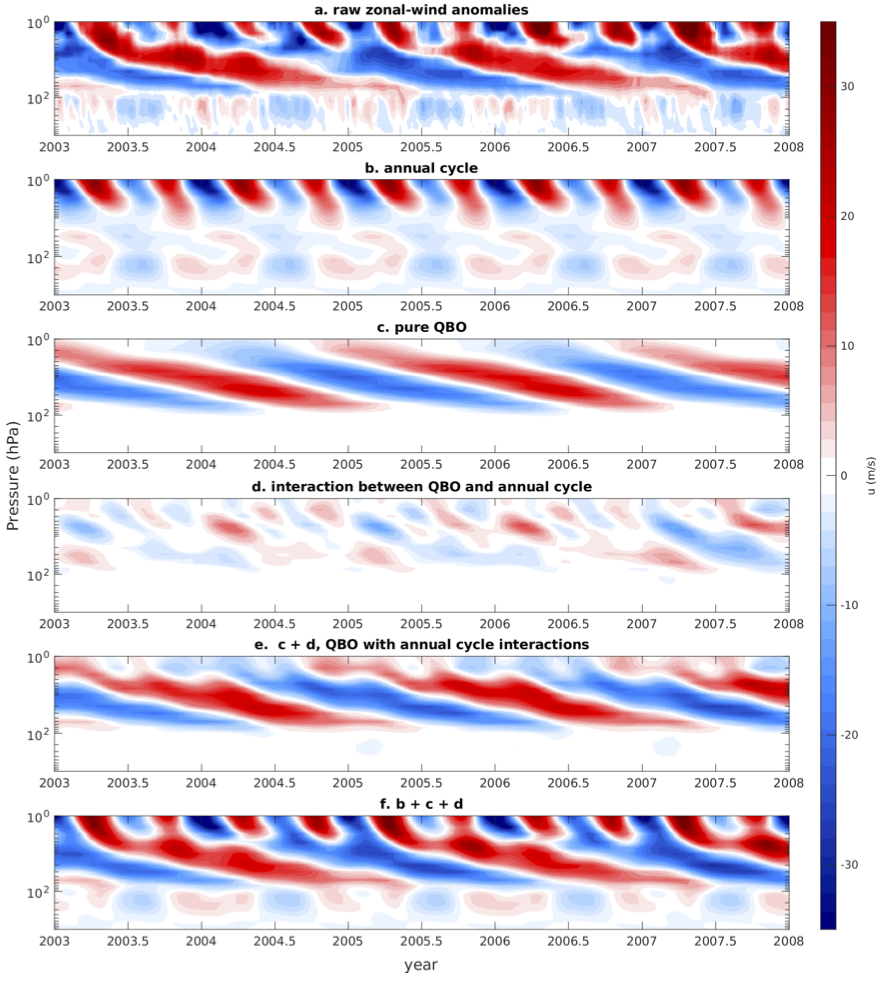Why does Europe tend to experience warmer winters following a major volcanic eruption?
Published:

Major volcanic eruptions, especially those in the tropics, can inject sulfate aerosols into the stratosphere, where they scatter incoming radition and cool the planet. The effect, which lingers as long as the aerosols (1-2 years), was observed by the Romans, if not earlier civilizations. Paradoxically, there’s evidence that Northern Europe tends to warm following major eruptions. This points to a circulation impact of volcanic aerosols. In our new paper, The Circulation Response to Volcanic Eruptions: The Key Roles of Stratospheric Warming and Eddy Interactions, now in press with the Journal of Climate, we highlight the importance of the fact that stratospheric aerosols warm the lower stratosphere. This drives a poleward shift in the jet stream, which warms Europe. We also zero in on the role of eddies in the mechanism with a hierarchy of atmospheric models.
The image above shows the zonal mean temperature and zonal wind response to aerosol induced warming of the lower stratosphere, focusing on the boreal winter season. Note the poleward shifts in the jet streams in both hemispheres!
The study was led by Kevin DallaSanta in collabortation with Matt Toohey at GEOMAR in Kiel, Germany.




